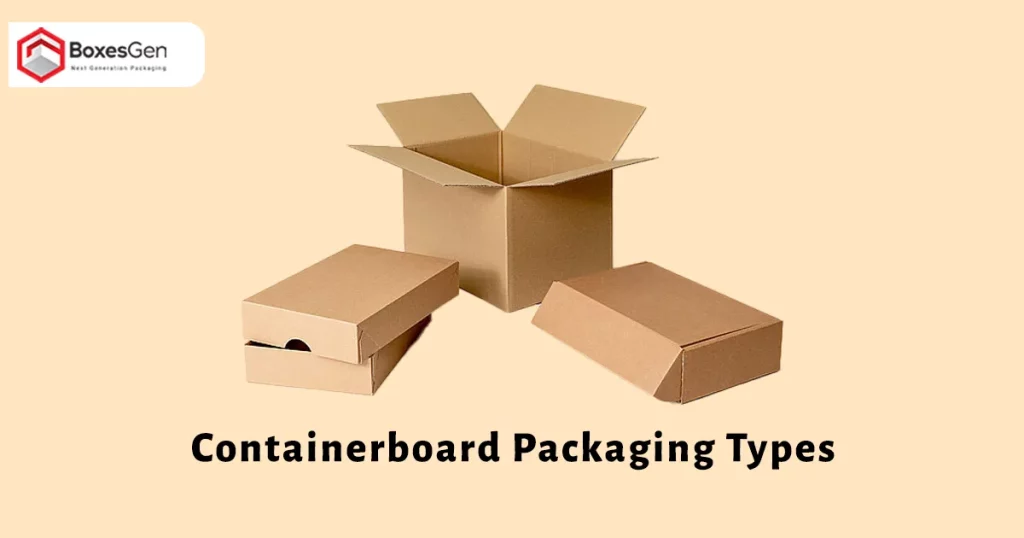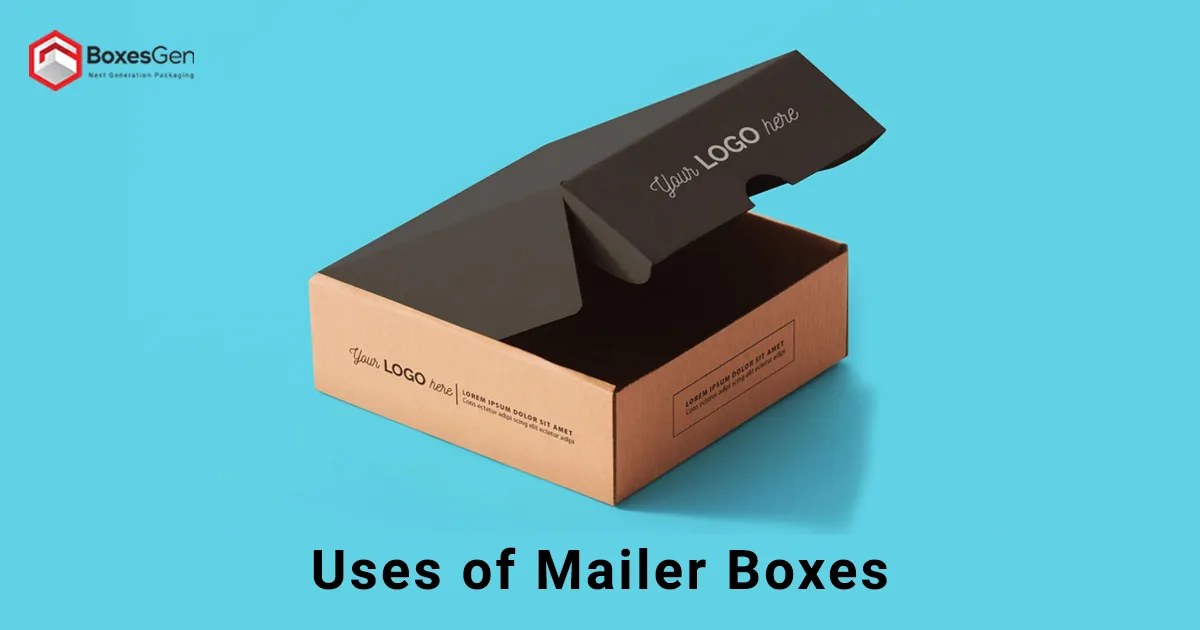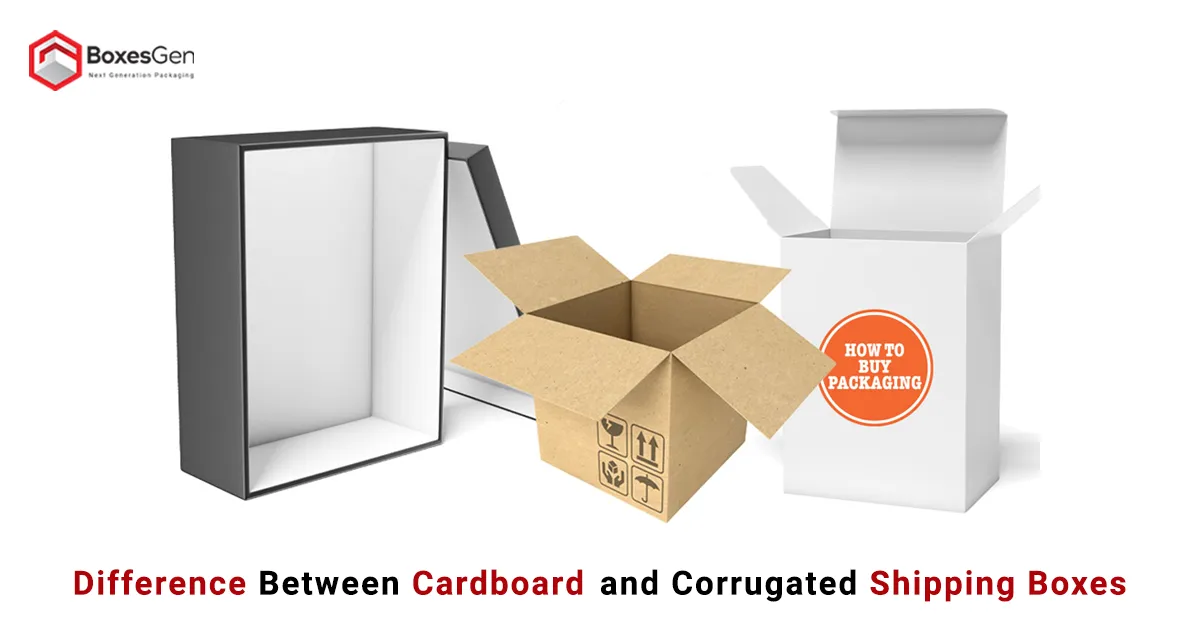Containerboard Packaging Types
In packaging market, containerboard holds a pivotal position, offering a diverse range of solutions for various industries. Understanding the different types of containerboard packaging is crucial for businesses seeking efficient and reliable packaging solutions. From corrugated boxes to Rigid Boxes, each type serves distinct purposes and offers unique advantages.
Corrugated Boxes
Corrugated boxes are perhaps the most ubiquitous form of containerboard packaging. These corrugated boxes consist of three layers – an inside liner, an outside liner, and fluting in between. This construction provides excellent strength and cushioning, making corrugated boxes ideal for shipping and transportation purposes.
Folding Cartons
Folding cartons are also known as paperboard boxes. They are versatile and lightweight packaging solutions. They are commonly used for Retail Packaging and display purposes due to their ability to be easily customized and printed on. Folding cartons offer a balance between affordability and functionality, making them a popular choice across various industries.
7-Ply Corrugated Box
For applications requiring extra strength and durability, 7-ply corrugated boxes are the go-to solution. With additional layers of fluting and liners, these boxes offer unparalleled protection for heavy or fragile items during transit. Industries such as automotive, electronics, and industrial equipment often rely on 7-ply corrugated boxes to ensure the safe delivery of their products.
Paperboard
Paperboard, also known as chipboard or cardboard, is a versatile packaging material used in packaging applications ranging from Cereal Boxes to Pharmaceutical Packaging. It comes in various thicknesses and can be easily die-cut and folded to create custom shapes and designs. Paperboard is prized for its lightweight nature and eco-friendly properties, making it a popular choice for sustainable packaging solutions.
Rigid Boxes
Rigid boxes are commonly known as setup or Gift Boxes, are characterized by their sturdy construction and elegant appearance. Made from thick paperboard or chipboard, rigid boxes offer a high level of protection and aesthetics, making them ideal for packaging luxury items such as cosmetics, jewelry, and electronics. These Custom Boxes can be customized with various Premium Finishes, including embossing, foil stamping, and matte or glossy coatings, to improve brand perception and shelf appeal.
Single Wall Corrugated Cardboard
Single wall corrugated cardboard strikes a balance between strength and cost-effectiveness, making it one of the most commonly used types of corrugated packaging. It consists of a single layer of fluting sandwiched between two liners, providing adequate protection for lightweight to medium-weight products. Single wall corrugated cardboard is versatile and can be used for a wide range of applications, from e-commerce Shipping Boxes to retail packaging.
Die Cutting
Die cutting is a manufacturing process used to create custom shapes and designs in various materials, including containerboard. By using specialized cutting dies, intricate shapes and patterns can be achieved with precision and consistency. Die cutting is commonly used in the production of folding cartons, rigid boxes, and specialty packaging such as Window Boxes and display stands.
Linerboard
Linerboard is a type of paperboard used to create the outer layers of corrugated board. It provides the structural integrity and surface for printing or labeling on corrugated boxes. Linerboard comes in different grades and thicknesses to suit specific packaging requirements, with options for both virgin and recycled fibers. The quality of linerboard directly impacts the strength and visual appeal of corrugated packaging.
Slide Boxes
Slide boxes are known as drawer boxes or telescoping boxes. They offer a convenient packaging solution for products that require easy access or display. They feature a sliding tray that can be effortlessly pulled out, allowing for quick retrieval of contents without the need to fully open the box. Slide boxes are commonly used for items such as chocolate, electronics accessories, and Cosmetics Packaging.
Slotted Boxes
Slotted boxes are characterized by their simple yet effective design. They are the standard choice for shipping and storage applications. They feature four flaps – two on the top and two on the bottom – that can be easily folded and sealed with tape or glue. Slotted boxes come in various sizes and configurations to accommodate different product dimensions and shipping requirements.
Type C Flute
Type C flute is a specific Corrugated Flute profile known for its balance between strength and cushioning properties. It is slightly taller than the more common B flute, providing better compression strength while still offering adequate cushioning for fragile items. Type C flute is often used in applications where protection against stacking or crushing is essential, such as heavy-duty shipping containers and displays.
Conclusion
The containerboard packaging market offers a multitude of options to suit diverse needs and requirements. From the strength and versatility of corrugated boxes to the elegance of rigid boxes, businesses can choose from a wide range of Packaging Solutions to meet their specific objectives. Understanding the characteristics and applications of different containerboard packaging types is essential for optimizing product protection, presentation, and overall brand experience.
Frequently Asked Questions
What is containerboard packaging?
Containerboard packaging refers to materials made from paperboard or corrugated cardboard used for creating boxes, cartons, and other packaging solutions for shipping, storage, and display purposes.
What is the difference between corrugated and containerboard?
Corrugated board consists of fluted layers sandwiched between linerboard, providing strength and cushioning. Containerboard is the broader category including both corrugated and solid fiber boards, with varying thicknesses and compositions.
What are the different types of corrugated cardboard?
The main types of corrugated cardboard are single-wall, double-wall, and triple-wall, each offering different levels of strength and protection for packaging applications.
What are the different types of packing cartons?
Packing cartons include folding cartons, setup boxes, and telescoping boxes, each designed for specific packaging needs ranging from retail display to shipping.
What is the difference between boxboard and containerboard?
Boxboard is a type of paperboard used for flat packaging like cereal boxes, while containerboard encompasses both boxboard and corrugated board used for creating boxes and cartons.
What is the raw material of containerboard?
Containerboard is primarily made from wood pulp derived from trees, though recycled fibers are also commonly used to produce eco-friendly packaging.
What is the demand for containerboard?
The demand for containerboard is driven by e-commerce, retail, food and beverage, and industrial sectors, with a growing emphasis on sustainable packaging solutions.
What is the process of containerboard?
The process involves pulping wood fibers, forming them into sheets, corrugating or laminating layers together, and cutting and folding the material into various packaging shapes.
What is an example of paperboard packaging?
Cereal boxes are a common example of paperboard packaging, typically made from lightweight yet sturdy paperboard material.
What is the difference between paperboard and cardboard packaging?
Paperboard is thicker and more rigid than regular paper but thinner than cardboard, whereas cardboard is a heavier and more durable type of paperboard often used for packaging.
What is the difference between medium and linerboard?
Medium is the fluted layer in corrugated board providing cushioning, while linerboard forms the outer surfaces of the board providing structure and printing surfaces.
How many types of paper packaging are there?
There are various types, including paper bags, envelopes, boxes, cartons, and wrapping paper, each serving different purposes in packaging applications.
What is paperboard packaging made of?
Paperboard packaging is typically made from layers of compressed paper fibers, often including recycled content, to provide strength and rigidity.
What is linerboard paper?
Linerboard paper is a thick, flat paperboard used to create the outer surfaces of corrugated board, providing strength and a surface for printing or labeling.
What is corrugated packaging used for?
Corrugated packaging is used for shipping, storage, and display of various products, providing protection against damage during transit and handling.
What is paper and paperboard packaging?
Paper packaging encompasses various types of paper-based materials used for packaging, including paperboard, corrugated board, and Kraft paper, offering diverse solutions for different applications.
Is paperboard the same as cardboard?
Paperboard is a broader term that includes cardboard, with cardboard being a type of thick, stiff paperboard used for packaging.
What are the disadvantages of paperboard packaging?
Disadvantages include susceptibility to moisture damage, limited load-bearing capacity compared to plastic, and potential environmental impact if not recycled properly.
Is paperboard considered paper or cardboard?
Paperboard is considered an intermediate between paper and cardboard, being thicker and more rigid than paper but not as heavy-duty as cardboard.
What are Amazon boxes made of?
Amazon boxes are typically made of corrugated cardboard, providing strength and durability for shipping various products to customers.
Is corrugated cardboard cheaper than plastic?
Corrugated cardboard is often more cost-effective than plastic for packaging, especially for one-time use applications, though prices may vary depending on factors like size and quantity.
What is the most common type of corrugated board?
Single-wall corrugated board is the most common type, featuring a single layer of fluting sandwiched between two linerboards, offering a balance of strength and affordability.
Why is corrugated so expensive?
Corrugated packaging may appear expensive due to factors like material costs, manufacturing processes, and customization options, but it offers excellent protection and versatility for various products.
What is the difference between cardboard and corrugated packaging?
Cardboard refers to thicker, heavier paperboard used for packaging, while corrugated packaging consists of layers of paperboard with fluted sheets in between, providing additional strength and cushioning.
Is there non-corrugated cardboard?
Yes, non-corrugated cardboard exists, typically in the form of solid fiberboard or chipboard, which is used for applications like cereal boxes or backing for notepads.
Are chipboard and paperboard the same?
Chipboard is a type of paperboard made from recycled paper stock and often used for rigid packaging like binders or backing for notepads.
What is the difference between cardboard and cartons?
Cardboard refers to the material itself, while cartons are containers made from cardboard, typically used for packaging and shipping goods.








